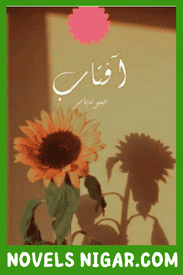The Enchanted Realms of Goa

Goa is often thought of as a tiny coastal state tucked away on the western coast of India, but in truth, it is a world of its own—a realm where history, culture, and nature weave together to create something truly enchanting. Known globally for its sun-kissed beaches, vibrant nightlife, and Portuguese heritage, Goa Games offers far more than just a postcard-perfect escape. Beneath the surface lies a layered and mesmerizing identity—part tropical paradise, part cultural mosaic, and part spiritual sanctuary. To step into Goa is to step into a space where time slows, senses awaken, and every corner tells a story.
The Call of the Sea
The first impression most visitors have of Goa comes from its coastline. Stretching over 100 kilometers along the Arabian Sea, its beaches are more than just sandy shores—they are cultural experiences. The north is lively, pulsating with energy. Baga and Calangute welcome travelers with buzzing shacks, water sports, and music that carries well into the night. Anjuna, once the epicenter of the hippie movement in the 1960s, still radiates a bohemian spirit through its flea markets and trance parties.
In contrast, the beaches of South Goa present another realm altogether. Palolem, Agonda, and Colva are quieter, offering solitude in the embrace of coconut palms and shimmering waters. Here, life moves at a slower rhythm. Fishermen mend their nets, dolphins arc gracefully in the sea, and travelers find the tranquility they seek. The duality of Goa’s coastline—one side wild and exuberant, the other calm and meditative—perfectly embodies its broader character.
A Tapestry of Heritage
Beyond the beaches, Goa tells the story of civilizations that left their imprint over centuries. Once part of powerful dynasties like the Kadambas and later the Vijayanagar Empire, it became a Portuguese colony in the early 16th century. For over 450 years, Goa was Europe’s stronghold in the East, and that influence is still etched in its architecture, language, and cuisine.
The old Latin quarters of Panaji, known as Fontainhas, resemble a colorful canvas of history. Narrow winding lanes are lined with bright houses painted in ochre, turquoise, and indigo, their red-tiled roofs and wrought-iron balconies speaking of Mediterranean aesthetics in tropical surroundings. Walking here feels like stepping into another century, where old-world charm coexists with the hum of modern life.
Goa’s churches and cathedrals stand as monumental testaments to this heritage. The Basilica of Bom Jesus, a UNESCO World Heritage Site, holds the mortal remains of St. Francis Xavier, revered as the “Apostle of the Indies.” Se Cathedral, with its grand Portuguese-Gothic architecture, and the Church of St. Cajetan, inspired by St. Peter’s Basilica in Rome, reveal the depth of faith and artistry that flourished here. Yet, Hindu temples such as the Shanta Durga and Mangeshi shrines thrive alongside, symbolizing Goa’s enduring spirit of harmony.
The Lure of Nature
Goa’s enchantment is not confined to the sea. Inland, the landscape unfurls into lush forests, cascading waterfalls, and wildlife sanctuaries that remind visitors of its ecological richness. The Western Ghats, a UNESCO World Heritage site, cradle the state in greenery. Dudhsagar Falls, tumbling dramatically from a height of over 300 meters, is one of India’s tallest waterfalls. In monsoon months, when the water gushes like frothy milk, it creates a sight that feels almost mythical.
For nature lovers, the Bhagwan Mahavir Wildlife Sanctuary and Mollem National Park provide encounters with exotic flora and fauna. Birdwatchers find solace in the Salim Ali Bird Sanctuary, where mangrove habitats shelter rare species like the bright kingfisher or the osprey. Trekking, spice plantation tours, and river cruises along the Mandovi or Zuari open up perspectives far beyond the sand and surf.
A Symphony of Flavors
Cuisine in Goa is an enchantment in itself. It is where coastal abundance meets centuries of cultural exchange. Fresh seafood dominates the table—kingfish, pomfret, mackerel, and prawns cooked in spicy, tangy curries rich with coconut and tamarind. The famed Goan fish curry and rice is a staple, while dishes like vindaloo, cafreal, and sorpotel reveal Portuguese influence married to Indian spices.
But food here is not limited to the savory. Bebinca, a layered dessert made of coconut milk, eggs, and ghee, is an indulgence reserved for festivals and celebrations. Feni, the local spirit distilled from cashew apples, embodies Goa’s spirit in liquid form—strong, distinct, and unforgettable. Dining in Goa is less about eating and more about experiencing; each bite is a journey across cultures and centuries.
The Pulse of Celebration
If there is one thing that binds Goa’s identity, it is its culture of celebration. From grand church feasts to Hindu temple yatras, from electronic music festivals to carnival parades, life in Goa is punctuated by joyous expression. Carnival, held before Lent, transforms the streets into a whirl of color, with floats, music, and dance capturing the state’s Portuguese legacy. Shigmo, a Hindu spring festival, celebrates folklore and mythology with equal exuberance. Meanwhile, the Sunburn Festival has put Goa on the global map as a destination for electronic dance music lovers.
Art thrives here as well. Local crafts—such as pottery, bamboo work, and azulejo tiles—carry on traditions. Modern galleries and street art scenes are emerging in Panaji and Mapusa, blending heritage with contemporary creativity. Goa is, in many ways, a canvas where every festival, every performance, every mural adds another brushstroke to its evolving portrait.
Spiritual Refuges
Despite its reputation as a party capital, Goa also offers sanctuaries of peace. The yoga and wellness retreats scattered across its villages attract seekers from around the world. Ashrams and meditation centers near beaches like Mandrem and Arambol create spaces for inner exploration. Here, the sound of waves often accompanies the rhythm of breath, and spirituality feels as natural as the sea breeze.
The intermingling of faiths, too, fosters an atmosphere of inclusivity. The ringing of church bells blends with the chanting of temple prayers and the call to prayer from mosques. This coexistence is perhaps one of Goa’s most profound enchantments—it is a land where differences dissolve into harmony.
The Eternal Allure
What makes Goa truly enchanted is its ability to mean different things to different people. For some, it is the land of endless beaches and carefree nights. For others, it is a cultural archive where East meets West. For nature lovers, it is a sanctuary of biodiversity; for spiritual seekers, a refuge of peace. Few places in the world manage to encompass so much within such a small area.
Yet, beyond these attractions, Goa’s essence lies in its rhythm. It is in the unhurried conversations with locals over a cup of chai, in the sunset that paints the sky in hues of gold and crimson, in the sound of the sea that becomes a lullaby at night. Goa does not just entertain or inspire—it lingers, becoming part of one’s memory and imagination long after departure.
Conclusion
The enchanted realms of Goa are not confined to geography—they live in experiences, in flavors, in stories that intertwine with history and nature. To journey through Goa is to be reminded that enchantment is not about fantasy alone; it is about discovering beauty in the everyday, wonder in the ordinary, and joy in the shared. Goa is more than a destination—it is a feeling, an embrace, and a rhythm that stays with those who surrender to its spell





